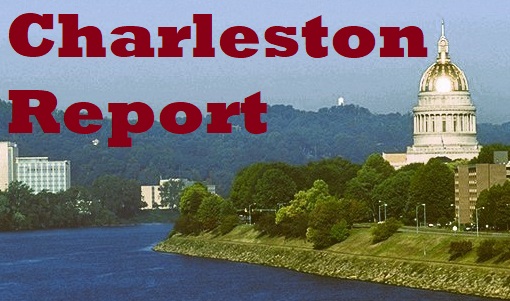July 28th, 2022 by WCBC Radio
Today, U.S. Senator Chris Van Hollen (D-Md.) announced the Senate passage of the Water Resources Development Act of 2022 (S. 4136) including key priorities he worked to secure in the legislation for Maryland. The legislation as a whole authorizes much-needed investments in our nation’s water infrastructure including to support clean drinking water and healthy communities, improve our environment, and strengthen our economy. For Maryland, the bill includes key resources to ensure our shipping channels and other waterways remain clear and accessible for navigation, support local water infrastructure projects, and fund Chesapeake Bay watershed environmental restoration, among others.
“Investing in our water infrastructure – from keeping Maryland’s ports and waterways navigable to protecting access to clean water – is critical to the health of Maryland’s citizens and economy,” said Senator Van Hollen. “This bipartisan package unlocks more resources for Maryland to help strengthen our supply chains, advance local drinking water and wastewater system improvement efforts, and clean up the Chesapeake. I will continue working to push this legislation – and these important wins for Maryland – across the finish line.”
Senator Van Hollen fought to include provisions within this legislation to:
· Require the Army Corps of Engineers to prioritize the dredging of shallower waterways. In total, Maryland has 62 “shallow draft channels,” which are waterways no deeper than 16 feet that connect to a bay or ocean. As of January 2022, of the top 16 priority shallow draft channels in Maryland there are 10 that have not been dredged in over 10 years – six were last dredged in the 1980s and 1990s. Many of these channels serve small marinas in Southern Maryland and on the Eastern Shore. Senator Van Hollen secured language requiring the Army Corps to develop new ranking criteria within 180 days of the bill’s enactment to ensure smaller waterways are not overlooked for dredging.
· Allow the Army Corps to provide support for non-federal projects in the Chesapeake Bay Basin states. This language expands the Army Corps’ ability to support non-federal water infrastructure projects in the Chesapeake Bay basin states such as stabilizing eroding streambanks, wastewater treatment, and stormwater and drainage systems. By allowing the Army Corps to provide support in these cases, local communities can modernize water infrastructure systems that provide clean water to households and keep pollution out of the Bay watershed.
o For example, the Town of Boonsboro in Washington County, MD has a leaking reservoir that if not repaired could cause “a public health catastrophe.” Expanding the Army Corps’ ability to assist with project like this will help maintain water service for residents and ensure public safety.
· Advance environmental justice by focusing resources on clean water and climate resilience projects in underserved communities. Senator Van Hollen fought for provisions that give the Army Corps increased capacity to provide solutions to pervasive environmental injustices that plague the nation’s most vulnerable communities. Specifically, the bill authorizes the Army Corps to carry out projects for the protection and restoration of coastal shorelines and riverbanks at a reduced local cost share of 10 percent from 50 percent for projects that benefit economically disadvantaged communities; and encourages the Corps to recruit new workers from underserved communities.
This legislation also provides for Maryland:
· $100,000,000 for water, wastewater, and other environmental infrastructure projects across the state. Local communities will have the opportunity to request these funds to support various water infrastructure needs important to them.
· Authorization of a feasibility study for flood risk management projects in Ellicott City and Howard County to ensure the Army Corps remains engaged in ongoing local efforts.
· Language urging the expedited completion of flood risk management projects in Cumberland, and rewatering for the Chesapeake and Ohio Canal.
Broadly, the Water Resources Development Act of 2022:
· Invests in our Nation’s Ports and Waterways. The Corps’ efforts to keep shipping channels navigable are essential to our economy. Over 99 percent of U.S. overseas trade volume moves through coastal channels that the Corps maintains.
o This bill facilitates the timely completion of much-needed improvements to the country’s inland waterways system by reducing the strain on the Inland Waterways Trust Fund.
o It addresses the harbor deepening and maintenance needs of commercially significant ports, maintaining their competitiveness and supporting global supply chains.
o The bill also authorizes new avenues for the provision of assistance to underserved community harbors that are critical to local and regional economies.
· Improves Inland and Coastal Resilience and Restores Ecosystems. Extreme weather events cause flooding that some communities are ill-prepared to withstand. Corps projects help mitigate the worst of these impacts.
o This legislation enables critical investments in the protection and restoration of shorelines and riverbanks from erosion and other damaging forces.
o It authorizes the Corps to modify shore protection projects during the performance of emergency restoration activities to increase resiliency.
o It streamlines the implementation of shoreline protection and restoration projects to aid communities most vulnerable to coastal storms. The bill enables communities to partner with the Corps to develop water resources projects that directly address risks of extreme weather.
o The bill supports the ability of states and localities to plan for, and respond to, water resources challenges.
o The bill authorizes the Corps to do significant work to mitigate the impact of repetitive drought conditions and conserve water supplies.





.jpg)











